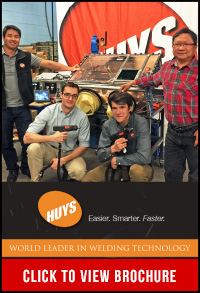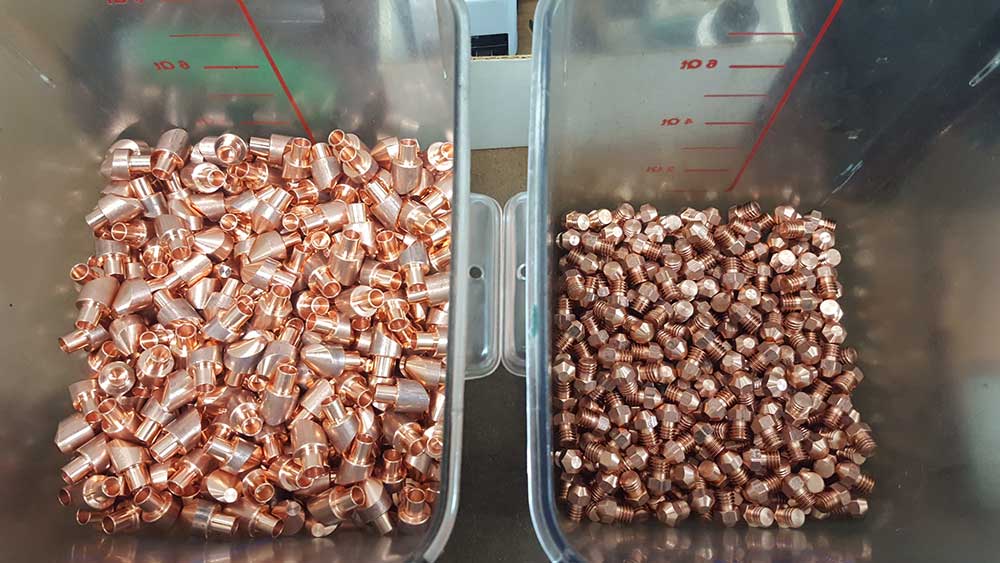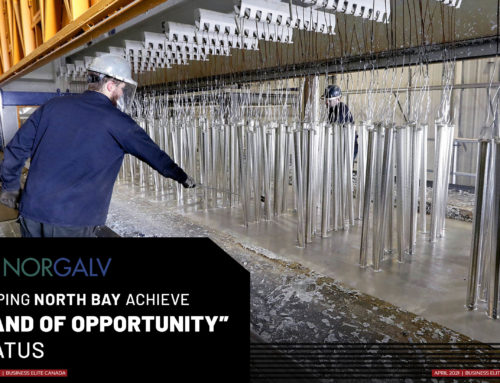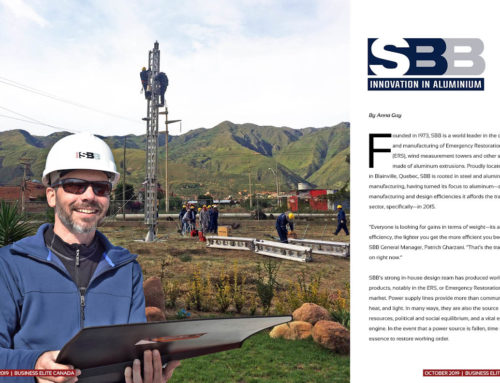World leader in welding technology
By Rajitha Sivakumaran
 Nigel Scotchmer completed his honours BA at the University of Toronto in the 1970s, majoring in English Literature. Did he have any idea that he would one day become a resistance welding expert and innovator? In the 40 years that followed, Scotchmer has published extensively on the topic, represented Canada for ISO (International Organization for Standardization) for resistance welding for 15 years and has been recognized with awards from the American Welding Society.
Nigel Scotchmer completed his honours BA at the University of Toronto in the 1970s, majoring in English Literature. Did he have any idea that he would one day become a resistance welding expert and innovator? In the 40 years that followed, Scotchmer has published extensively on the topic, represented Canada for ISO (International Organization for Standardization) for resistance welding for 15 years and has been recognized with awards from the American Welding Society.
After completing his studies at the Institute of Chartered Accountants of Ontario in 1983, Scotchmer found himself in Germany, working as a Vice President of Magna International, a Canadian global automotive supplier. Here he was first introduced to Huys Industries, a welding, joining and coating company, headquartered in Weston, Ontario. After returning to Canada, Scotchmer, finding out that Huys was for sale, jumped on the opportunity in 1998. For nearly two decades now, he has been owner and president of Huys.
“The unique aspect of why I bought the company was that it had a technology that I hadn’t seen before and no one seemed to know why it worked so well,” Scotchmer said.
Huys specializes in resistance welding. Scotchmer simplifies the chemistry behind this technology with the following explanation:
“Cars are mostly made of steel since the material is inexpensive. More than 80 per cent of the 5,000 or 6,000 welds on a car are done with the resistance welding. Robots with copper arms are used to weld steel parts since electricity flows easily through the copper, but resistance is created when the electricity reaches the steel, as electricity can’t flow through it so easily. So what happens? The steel gets really hot, and it gets so hot so quickly that the metal melts and welds.”
Once you’ve welded the car together, the job is not done, says Scotchmer. Copper touching the steel is very soft and melts at a low temperature, which is problematic since it, too, will start melting during the high-temperature welding process (referred to as “mushrooming”). But there was another issue as well.
Cars manufactured in the 1970s rusted because salt and other elements ate away at the vehicle. To resolve this, manufacturers started using zinc-coated steel. However, when zinc and copper come in contact, brass is formed, which is very brittle. Consequently, the copper electrodes wear out quickly under high temperatures.
“What I saw in Germany when I was with Magna International was that this Canadian company called Huys Industries had actually come up with this clever idea of putting a material on the ends of the copper electrodes, which was titanium carbide,” Scotchmer said.
Carbides are very hard and titanium has a high melting temperature. These traits are opposite those of copper, making them dissimilar metals. Generally speaking, the two cannot be welded together since by the time titanium carbide starts melting, the copper has already vapourized. Somehow, Huys accomplished this seemingly impossible task. The result was this: the copper electrodes lasted two to four times longer.
“I was intrigued as to how Huys was able to weld titanium carbide to copper since they are dissimilar materials. When I bought the company, they didn’t know why,” Scotchmer said. The matter was a perplexing one, but finally a solution arose after extensive research. Through this emerged the company’s claim to fame: low energy welding.
“You shouldn’t be able to weld copper with titanium carbide, but the whole reason that this is possible is because of low energy welding,” Scotchmer said, explaining that the secret behind the process involves using only a very small amount of energy. “The trick is we’re putting in about one joule of energy. We’re melting one tiny bit of the titanium carbide and depositing a spark of it on the copper.”
Even though the titanium carbide is being melted at a very high temperature, when the spark lands on a relatively large piece of copper, the copper cools quickly and remains largely unaffected by the tiny spark.
Usually when two parts are welded together, the intense heat may compromise the structural integrity and strength of the area around the spot of welding (the “heat affected zone” or HAZ). The great thing about low energy welding is that putting in one joule of energy minimizes impact on heat affected zones. Expensive components like a jet engine blade can be repaired easily with low energy welding. Not only will costly parts last longer, they can be repaired at low expense.
We can continue to expect great innovation from Huys. The company is highly invested in R&D, an initiative that has been largely supported by the Canadian government through tax incentives. “I think the Canadian government has done a very good job supporting small companies. It’s a combination of luck but it’s also the opportunity Canadian universities and government gave us working with them that allowed us to make breakthroughs,” Scotchmer said, adding that the company holds a number of patents with “more to come”.
Huys’ speciality is relatively new in the welding industry. Scotchmer has no doubt that new companies will come along once people see it as an opportunity, but he vows that Huys will continue to be a world leader in this industry.
Huys Industries’ technology is currently used in a number of sectors, from automotive and aerospace to medical instruments and electronics. Operating from two manufacturing locations in Canada and one in the United States, Huys sells globally to Brazil, Japan, China, Korea, Israel and Europe. Since it primarily operates in North America, the company’s next step is to further expand its global footprint.
Despite this vision, Scotchmer also says that he wants Huys to embrace it Canadian roots. “We want to stay in Canada. We want to manufacture in Canada. I want to keep jobs in Canada because that’s where I live, that’s where my family is from. We are Canadian,” Scotchmer said.






